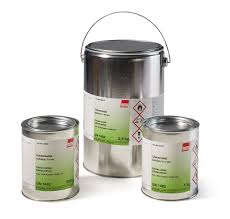Calcium Carbide: Applications and Safety Considerations

Introduction
Calcium carbide, a chemical compound with the formula CaC2, plays a significant role across various sectors, particularly in the production of acetylene gas and as a ripening agent in fruits. As countries increasingly seek to boost agricultural output and improve food handling, understanding the implications of calcium carbide use becomes crucial, especially in terms of health and safety.
Key Applications
One of the primary uses of calcium carbide is in the generation of acetylene gas, which is essential for welding and cutting metals. In this process, calcium carbide reacts with water to produce acetylene, providing a high-temperature flame necessary for industrial applications. The welding industry remains a significant consumer of this compound.
In agriculture, calcium carbide is prominently used to accelerate fruit ripening. Its ability to release acetylene gas when it comes into contact with moisture makes it an effective ripening agent for bananas, mangoes, and other fruits. This practice, however, is controversial as it raises health concerns associated with the residues left on fruit and potential hazardous effects on human health.
Safety Concerns
The use of calcium carbide is subject to strict regulations due to its hazardous nature. When handling calcium carbide, it is crucial to follow proper safety protocols, such as wearing protective gear and handling it in well-ventilated areas. Exposure to calcium carbide can cause skin irritation and has been linked to several health issues, including nausea and respiratory problems when inhaled.
Moreover, there are significant concerns regarding the quality control of calcium carbide sold in the market, especially in developing countries. Reports suggest that many products may contain impurities, including arsenic, which can have severe health implications. Hence, consumers are advised to be vigilant and source calcium carbide from reputable suppliers.
Conclusion
Calcium carbide is an essential chemical with diverse applications, particularly in industries like welding and agriculture. However, it is accompanied by serious health and safety concerns that cannot be overlooked. As the demand for effective agricultural practices continues to rise, it is imperative for stakeholders, including farmers, regulators, and health professionals, to prioritize safe handling practices and awareness campaigns. Moving forward, increased regulation and monitoring can help mitigate risks associated with this compound, ensuring it is used safely and responsibly.









